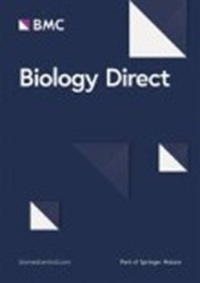Glucose deprivation-induced disulfidptosis in human nucleus pulposus cells: a novel pathological mechanism of intervertebral disc degeneration
IF 5.7
2区 生物学
Q1 BIOLOGY
引用次数: 0
Abstract
Limited supply of certain nutrients and deregulation of nucleus pulposus (NP) plays a key role in the pathogenesis of intervertebral disc degeneration (IVDD). However, whether nutrient deprivation-induced cell death, particularly disulfidptosis, contributes to the depletion of NP cells and the development of IVDD, is unknown. RNA-seq, single-cell RNA-seq, and Genome-wide DNA methylation datasets of nucleus pulposus tissue were collected for bioinformatic analysis. Predictive models of disulfidptosis related genes in IVDD were constructed by machine learning and their differential expression was analyzed. In addition, we performed cell subsets identification analysis, cell-cell communications analysis, and functional enrichment analysis of key genes in the core subset based on single-cell RNA-seq data of NP tissues isolated from one normal sample and one IVDD sample. Finally, glucose deprivation-induced disulfidptosis in human NP cells (HNPCs) was verified by various cell death inhibitors and disulfidptosis-related molecular markers. We found the disulfidptosis signal was significantly activated in the IVDD group. Using single-cell RNA-seq analysis, we focused on the chondrocytes and found that disulfidptosis-related genes significantly highly expressed in the IVDD C4 chondrocyte subset, which was identified as a new disulfidptosis-associated cell subset. Correlation analysis revealed the negative correlation between SLC7A11 (driving gene of disulfidptosis) and the glucose transporter GLUTs (SLC2A1-4) family genes (suppressing genes of disulfidptosis) in the IVDD group. We also found obvious cell death in HNPC upon glucose starvation, while employment of various cell death inhibitors could not inhibit glucose starvation-induced death in HNPCs. Moreover, the accumulation of disulfide bonds in cytoskeletal proteins was indicated by slowed migration in non-reducible protein blotting experiments. 2-DG, a key disulfidptosis inhibitor, significantly rescued cell death caused by glucose starvation through lowering the NADP+/NADPH ratio. We validated the occurrence of disulfidptosis in HPNCs and identified a novel disulfidptosis-associated cell subset, followed by experimental verification of disulfidptosis in a glucose-limited context to mimic a fall in nutrient supply during the development disc degeneration. These findings provided new insights into the pathological mechanisms of IVDD and encourage us to explore potential therapeutic targets involved in the regulation of disulfidptosis for the prevention of intervertebral disc degeneration.葡萄糖剥夺诱导的人髓核细胞二硫化:椎间盘退化的一种新病理机制
某些营养物质的有限供应和髓核失调在椎间盘变性(IVDD)的发病机制中起着关键作用。然而,营养匮乏诱导的细胞死亡(尤其是二硫化硫)是否导致了髓核细胞的耗竭和 IVDD 的发展尚不清楚。研究人员收集了核团组织的RNA-seq、单细胞RNA-seq和全基因组DNA甲基化数据集进行生物信息学分析。通过机器学习构建了IVDD中二硫化相关基因的预测模型,并对其差异表达进行了分析。此外,我们还基于从一个正常样本和一个 IVDD 样本中分离出的 NP 组织的单细胞 RNA-seq 数据,对核心亚组中的关键基因进行了细胞亚组识别分析、细胞-细胞通讯分析和功能富集分析。最后,通过各种细胞死亡抑制剂和二硫化相关分子标记物验证了葡萄糖剥夺诱导的人NP细胞(HNPCs)二硫化。我们发现,IVDD组的二硫化硫信号被明显激活。通过单细胞RNA-seq分析,我们聚焦于软骨细胞,发现二硫化相关基因在IVDD C4软骨细胞亚群中明显高表达,并将其鉴定为一个新的二硫化相关细胞亚群。相关性分析表明,在IVDD组中,SLC7A11(二硫化硫的驱动基因)与葡萄糖转运体GLUTs(SLC2A1-4)家族基因(二硫化硫的抑制基因)呈负相关。我们还发现,在葡萄糖饥饿时,HNPC 的细胞明显死亡,而使用各种细胞死亡抑制剂并不能抑制葡萄糖饥饿诱导的 HNPC 死亡。此外,细胞骨架蛋白中二硫键的积累在非还原蛋白印迹实验中表现为迁移减慢。2-DG是一种关键的二硫键抑制剂,它能通过降低NADP+/NADPH比率显著缓解葡萄糖饥饿导致的细胞死亡。我们验证了二硫化硫在HPNCs中的存在,并发现了一个新的与二硫化硫相关的细胞亚群,随后在葡萄糖受限的情况下对二硫化硫进行了实验验证,以模拟椎间盘变性发展过程中营养供应的下降。这些发现为了解椎间盘突出症的病理机制提供了新的视角,并鼓励我们探索调控二硫化硫过程以预防椎间盘变性的潜在治疗靶点。
本文章由计算机程序翻译,如有差异,请以英文原文为准。
求助全文
约1分钟内获得全文
求助全文
来源期刊

Biology Direct
生物-生物学
CiteScore
6.40
自引率
10.90%
发文量
32
审稿时长
7 months
期刊介绍:
Biology Direct serves the life science research community as an open access, peer-reviewed online journal, providing authors and readers with an alternative to the traditional model of peer review. Biology Direct considers original research articles, hypotheses, comments, discovery notes and reviews in subject areas currently identified as those most conducive to the open review approach, primarily those with a significant non-experimental component.
 求助内容:
求助内容: 应助结果提醒方式:
应助结果提醒方式:


